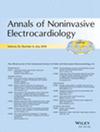Predictive Value of Noninvasive Cardiac Function Monitoring Combined With GRACE Score for Short-Term Outcomes in Patients With ST-Segment Elevation Myocardial Infarction
Abstract
Objective
To investigate the correlation between non-invasive cardiac function monitoring indexes and recent adverse prognosis in patients with STEMI. The hemodynamic indexes with high diagnostic value were selected to construct a new risk prediction model combined with GRACE scores, and the efficiency of the new prediction model was evaluated.
Methods
STEMI patients who met the inclusion and exclusion criteria were selected. All patients were followed for 6 months of major adverse cardiovascular events (MACE). The non-invasive cardiac function monitoring indexes were analyzed by univariate and multivariate logistic regression. The ROC curve was used to evaluate the accuracy of non-invasive cardiac function indexes predicting MACE. Then, a new risk prediction model was established and its prediction efficiency was evaluated by ROC curve.
Results
Patients were divided into MACE group (N = 69) and non-MACE group (N = 173), stroke volume (SV), cardiac output (CO), cardiac index (CI), cardiac time intervals (CTI), early diastolic filling rate (EDFR), end-diastolic volume (EDV), and systemic vascular resistance (SVR) were found to be significant predictors of recent MACE events in STEMI patients. Multivariate logistic regression analysis confirmed that indicators of noninvasive cardiac function were independent predictors. In addition, the combination of SV and CTI with the GRACE score has the potential to enhance the predictive accuracy for MACE.
Conclusion
Non-invasive hemodynamic indicators SV, CO, CI, CTI, EDFR, EDV and SVR can not only independently predict the risk of recent MACE in patients with STEMI, but can also be used as joint indicators to significantly improve the predictive ability of GRACE score.


 求助内容:
求助内容: 应助结果提醒方式:
应助结果提醒方式:


